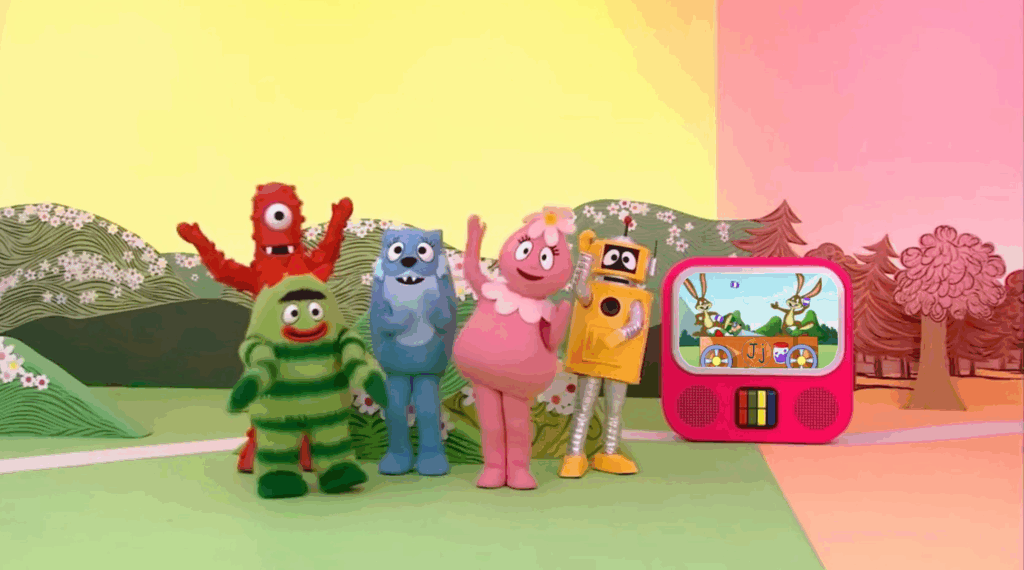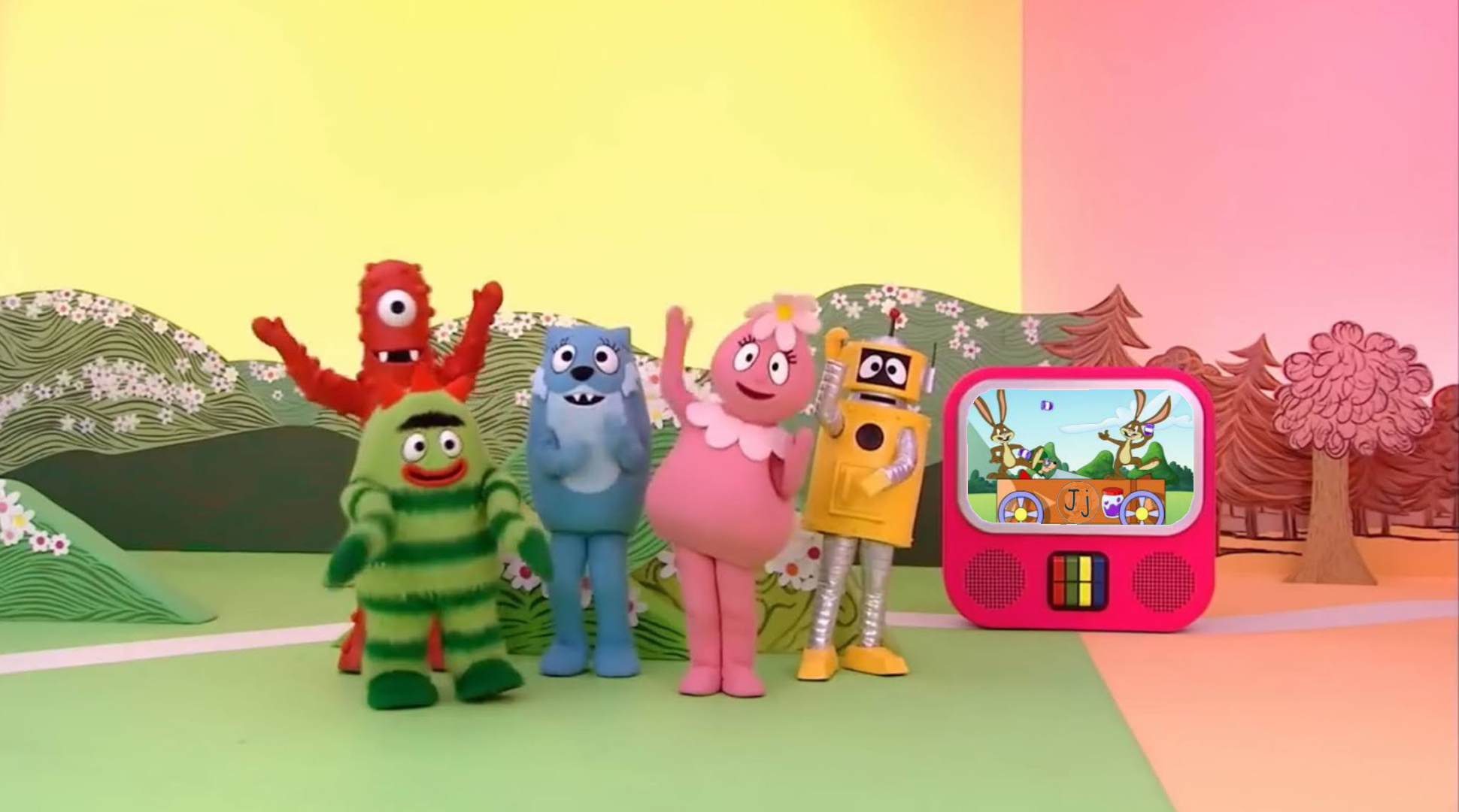
The Enduring Appeal of Yo Gabba Gabba! and the Spotlight on Pink
Yo Gabba Gabba! burst onto the children’s television scene in 2007, quickly becoming a cultural phenomenon. Its vibrant characters, catchy music, and emphasis on positive life lessons resonated with both children and their parents. Among the show’s many memorable elements, the use of color played a crucial role in its appeal. This article delves into the world of Yo Gabba Gabba!, with a particular focus on the significance of the color pink within the show’s aesthetic and its broader impact.
A Brief Overview of Yo Gabba Gabba!
Created by Christian Jacobs and Scott Schultz, Yo Gabba Gabba! featured a unique blend of live-action and animation. The show centered around DJ Lance Rock, a deejay who brought to life five friendly monsters: Brobee (a small, green monster), Foofa (a flower-like, pink monster), Muno (a tall, red cyclops), Plex (a yellow robot), and Toodee (a blue cat-dragon). Each episode featured musical performances, dance segments, and short animated stories, all designed to teach children valuable lessons about friendship, creativity, and healthy living.
The Importance of Color in Yo Gabba Gabba!
Color played a vital role in the visual identity of Yo Gabba Gabba!. The show’s creators understood the power of color to attract and engage young viewers. Each character was assigned a distinct color, making them easily identifiable and memorable. The bright, saturated hues created a visually stimulating environment that captivated children’s attention and enhanced their viewing experience. The intentional use of pink for Foofa, the flower-like character, was particularly significant.
Foofa: The Pink Embodiment of Happiness and Fun
Foofa, the cheerful and optimistic pink flower monster, is a central figure in Yo Gabba Gabba!. Her pink color is no accident; it’s a deliberate choice that reflects her personality and role within the group. Pink is often associated with femininity, sweetness, and playfulness, qualities that Foofa embodies perfectly. Her presence brings a sense of joy and lightheartedness to the show, making her a favorite among young viewers.
Foofa’s design further enhances her appeal. Her flower-like appearance is both whimsical and endearing, and her expressive eyes and cheerful demeanor make her instantly likable. She often serves as a voice of reason and encouragement, helping her friends navigate challenges and celebrate their successes. The color pink, in this context, becomes synonymous with positivity and support.
The Psychological Impact of Pink on Children
The psychological effects of color on children have been extensively studied. Pink, in particular, is often associated with feelings of calm, comfort, and love. It can also evoke feelings of happiness, optimism, and creativity. By featuring a prominent pink character like Foofa, Yo Gabba Gabba! tapped into these positive associations, creating a show that was not only entertaining but also emotionally resonant for young viewers. The consistent visual association of Foofa with the color pink reinforces these positive emotions and associations.
Yo Gabba Gabba! and its Influence on Children’s Media
Yo Gabba Gabba! had a significant impact on children’s media, influencing the style and content of subsequent shows. Its use of bright colors, catchy music, and positive messages set a new standard for children’s programming. The show’s success demonstrated that educational content could be both entertaining and engaging, paving the way for other innovative and creative children’s shows. The show’s emphasis on diversity and inclusivity also made it a positive influence on young viewers, promoting acceptance and understanding.
The show’s use of pink for Foofa, and the positive associations it created, also influenced the way pink was perceived in children’s media. It helped to break down gender stereotypes and demonstrate that pink could be a color for everyone, not just girls. This subtle but significant shift in perception contributed to a more inclusive and accepting environment for children.
The Enduring Legacy of Yo Gabba Gabba!
Although Yo Gabba Gabba! ended its original run in 2015, its legacy continues to endure. The show’s episodes are still widely available on streaming platforms, and its characters remain popular among children and adults alike. The show’s influence can be seen in the continued popularity of colorful, musical children’s programming. The positive messages and values that Yo Gabba Gabba! promoted continue to resonate with audiences, making it a timeless classic.
The show’s use of color, particularly the prominent role of pink in Foofa’s character, remains a significant aspect of its appeal. The positive associations with pink that Yo Gabba Gabba! helped to create have had a lasting impact on children’s media and culture. The show’s ability to entertain, educate, and inspire young viewers is a testament to its enduring legacy.
The impact of Yo Gabba Gabba! extends beyond just entertainment. It fostered creativity, encouraged physical activity through dance, and taught valuable social skills. The show’s emphasis on friendship and cooperation helped children learn how to interact with others in a positive and constructive way. The inclusion of diverse musical styles and cultural references exposed children to a wide range of influences, broadening their horizons and fostering a sense of global awareness. The consistent presence of Foofa, the pink character, reinforced themes of kindness and empathy.
Where is Yo Gabba Gabba! Now?
While the original series has concluded, the spirit of Yo Gabba Gabba! lives on. Reruns continue to air, and the characters remain popular through merchandise and online content. In 2021, Apple TV+ announced a reboot of the series, titled “Yo Gabba Gabba! Land,” promising to bring the same energy and positive messages to a new generation of viewers. The reboot aims to retain the core elements that made the original series so successful, including the vibrant colors, catchy music, and emphasis on learning and fun. Fans eagerly anticipate the return of their favorite characters, including Foofa, the beloved pink flower monster.
Conclusion: The Lasting Charm of Yo Gabba Gabba! and the Power of Pink
Yo Gabba Gabba! was more than just a children’s television show; it was a cultural phenomenon that captured the hearts and minds of audiences worldwide. Its unique blend of music, animation, and positive messages made it a groundbreaking and influential program. The show’s use of color, particularly the prominent role of pink in Foofa’s character, was a key element of its success. The positive associations with pink that Yo Gabba Gabba! helped to create have had a lasting impact on children’s media and culture. As the show continues to inspire and entertain new generations of viewers, its legacy as a pioneer in children’s programming remains secure. The upcoming reboot promises to reintroduce the magic of Yo Gabba Gabba! to a new audience, ensuring that the show’s positive messages and vibrant characters, including the pink Foofa, will continue to resonate for years to come. The show’s ability to teach valuable life lessons in an engaging and entertaining way made it a valuable resource for parents and educators alike. The enduring appeal of Yo Gabba Gabba! is a testament to its creativity, innovation, and commitment to providing high-quality programming for children. The color pink, as embodied by Foofa, remains a symbol of joy, optimism, and the power of positive thinking. The show successfully integrated the color pink into its narrative, making it an integral part of the show’s identity and appeal. Further analysis of color theory in children’s media could reveal more insights into the show’s lasting success. [See also: The Psychology of Color in Children’s Media] [See also: The Evolution of Children’s Television Programming]

